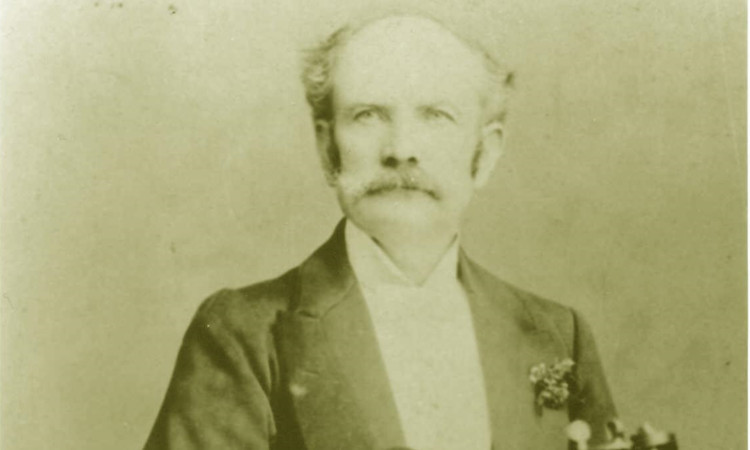A fresh insight into the Angus life of Scotland’s Strathspey King has emerged amid the focus on the legendary fiddler.
James Scott Skinner lived in a Monikie cottage which for almost a decade has been at the heart of an Angus Council enforcement wrangle over the untidy state of the garden there.
There is a prospect that the historic, but now greatly ordered, Broomwell Gardens property may be bulldozed to pay creditors, but fans of the man regarded as probably Scotland’s most influential violinist say it would be a shame if the important link to the rural county was lost.
Among them are archivist and researcher Sandy Dolan, whose research into the life of the enigmatic talent has seen him give many talks on Scott Skinner, the 170th anniversary of whose birth fell earlier this month.
Mr Dolan, who also knew Scott Skinner’s niece, said he hoped the unusual Angus tie would extend interest in the music of the Deeside dancing master’s son ever further, but admitted the record of his time in Monikie is sparse.
It was shortly after his 1893 return from touring Canada and America that Scott Skinner would meet his second wife, Gertrude Anderson Park and Angus became their romantic bolthole.
“By 1897 they were living together, which in those days must have been unheard of, at Broomwell Cottage,” said Mr Dolan.
“Shortly after his first wife Jane’s death in the Elgin poorhouse in January 1899, Scott Skinner and Gertrude were to be married in a simple ceremony at Broomwell Cottage with just a few close friends present.”
The marriage would last a decade, but Scott Skinner could not fund his wife’s extravagant tastes and she departed for South Africa, with the contents of the cottage being sold.
Mr Dolan added: “There are not many bones to pick over regarding Scott Skinner’s time at Monikie. Broomwell Cottage was given to him as a wedding gift from his great admirer Wiliam McHardy, the Laird o’ Drumblair.
“Extremely proud of his rose garden, he was once seen cutting the garden with a pair of small house scissors.”
The historian has uncovered a story of a staff member at the village post office being presented with a piece of music by Scott Skinner, written on one of his cuffs, which the musician demanded be sent to London.
Skinner’s first Angus appearance was in Montrose in January 1897 as one of the acts in the burgh hall corporation concert.
During the 1914-1918 war, the Strathspey King would perform at many fundraising concerts to support the men on the front line, touring north and south of the border to play.
In August 1922, at another of his concerts in the Montrose Burgh Hall, a report on the 79-year-old performance read: “That wonderful old fiddler Mr Scott Skinner is still going strong at an age when most professional musicians and other individuals are thinking of a bath chair.”
Mr Dolan said: “Prior to the Montrose booking, he had already done 79 concerts, one for each of his years.”
Scott Skinner was to return to Montrose once more on December 10 1924 for a grand farewell concert before a large and, as usual, very appreciative audience, bringing the curtain down on his time in Angus as a performer and proud citizen.
His Angus performance came just three years before his death in March 1927.
Mr Dolan is a regular visitor to Scott Skinner’s grave in Allenvale cemetery in Aberdeen, where friends funded a memorial later unveiled by Harry Lauder.
“He was an amazing musician and fastidious about his recordings, which had to be absolutely perfect,” he said.
